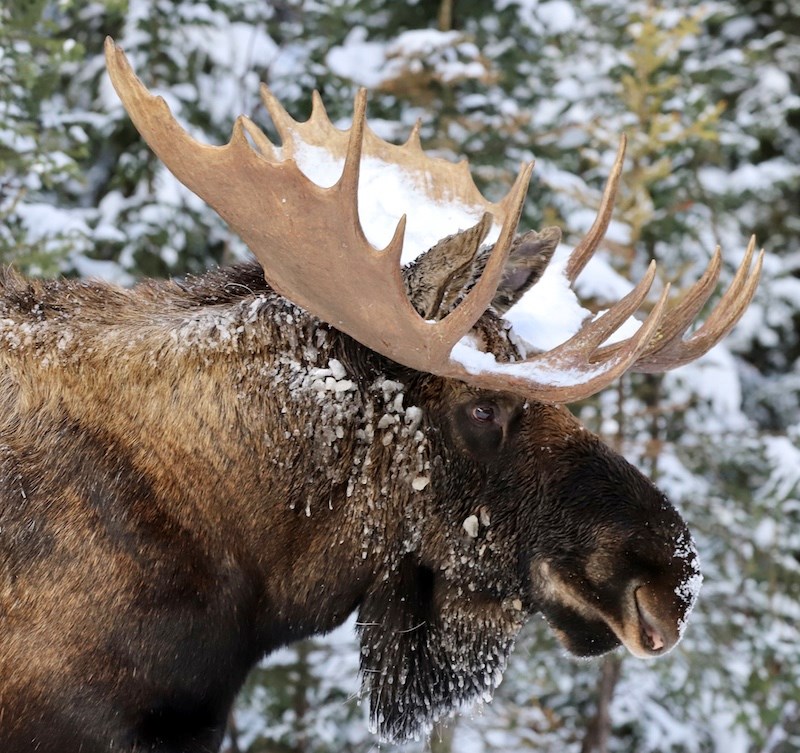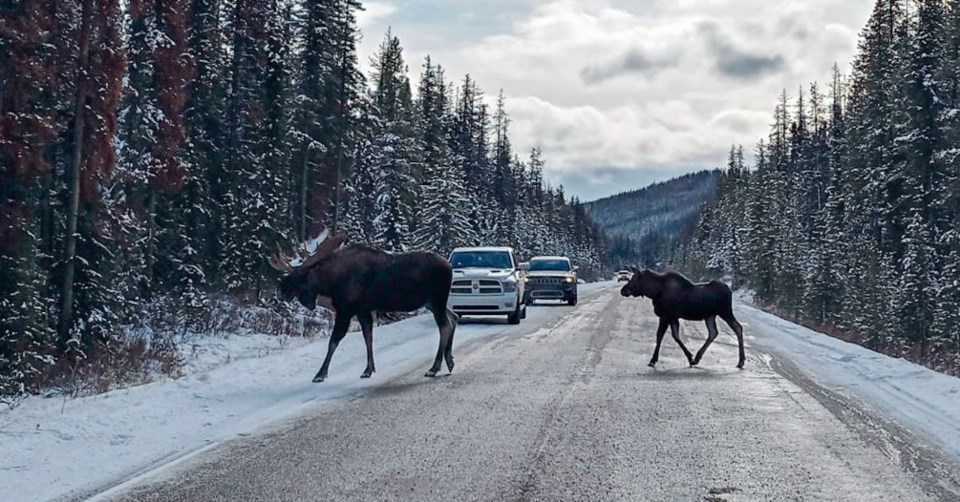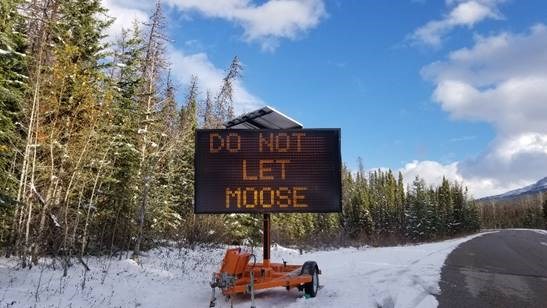
Fuchsia Dragon | [email protected]
Drivers heading down Maligne Lake Road are being urged by Parks Canada to not let moose lick their cars.
At this time of year it is not unusual to see a dozen moose between Medicine and Maligne Lakes. They are often standing or kneeling down in the middle of the driving lanes eating road salt. Sometimes they are just lying down on the road surface resting. Other times they are in the ditch or forest adjacent to the road.
Moose also like to lick the road salt that splashes onto vehicles in the winter, but people are getting “far too close” to the animals, said Jasper National Park spokesman Steve Young.
“(This) started as an occasional issue a few years ago and now is too common,” he said in an email.
The moose population in Jasper has grown as the wolf population has declined and there is an emerging human-wildlife conflict challenge as salt deprivation brings the animals close to vehicles, they are getting fed, and they are becoming habituated.
“People are getting far too close, and it's perpetuated by their (the moose’s) obsession with salt, accessing the vehicles,” said Young.

He said this issue goes hand-in-hand with the associated dangers of moose being drawn to and standing in the road.
Jasper National Park has a restricted activity order, introduced in 2020, requiring people to stay completely in their cars when encountering wildlife along highways in the park,
You must be 100 metres away from any bear, cougar, or wolf and 30 metres of any elk, moose, caribou, sheep, or goat except when completely inside a legally positioned motor vehicle
It is also against the law to feed, entice or disturb wildlife in national parks and violators could face charges of fines of up to $25,000.




